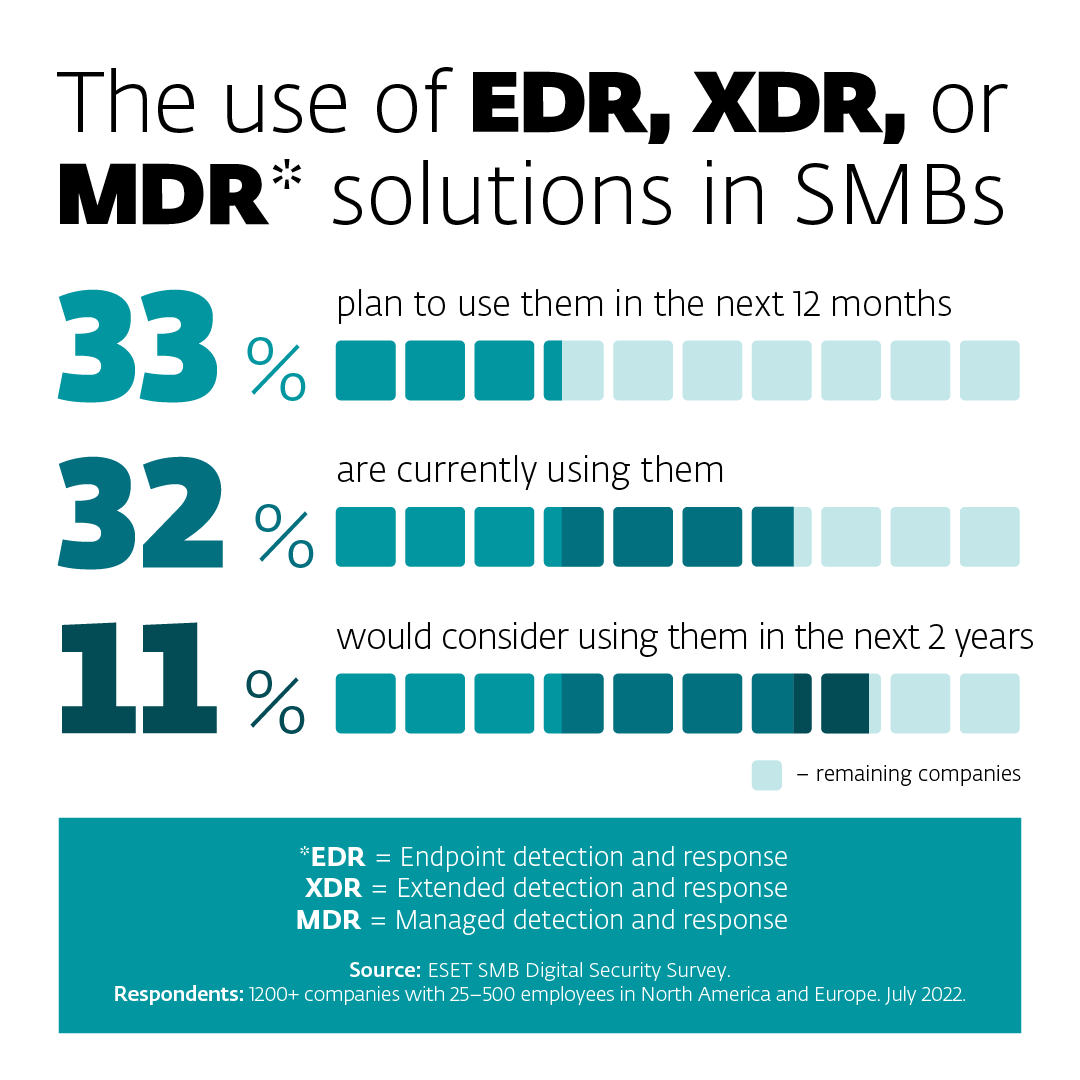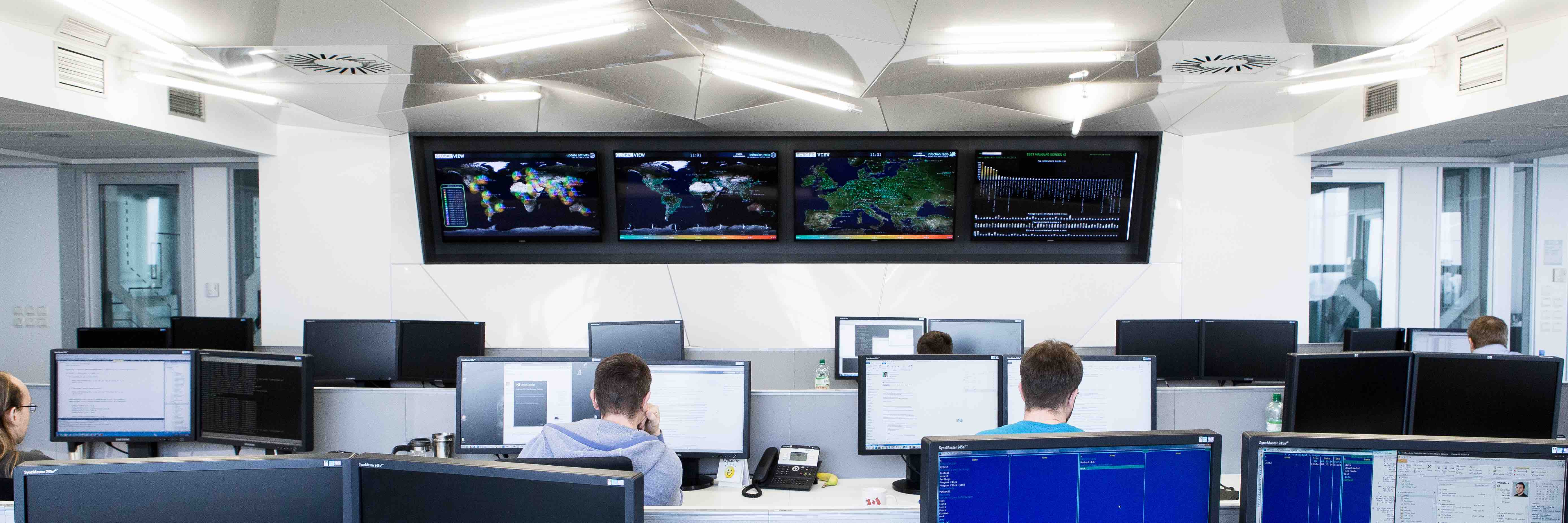There has been a lot of buzz in the IT community about XDR (extended detection and response) solutions, which use behavioural analytics across endpoints, networks, cloud, email, and other layers to spot suspicious activity and stop attackers before they can make an impact. Many companies, including smaller businesses, outsource this service – this is where MDR (managed detection and response) steps in.
Generally, XDR solutions form a whole new submarket of digital security tools, built on the premise that prevention always fails and that, eventually, cybercriminals will successfully attack your system. That’s why the detection and response phase is substantial, and various IT experts and automated systems usually supervise both.
“XDR solutions are mostly used by large enterprises that can afford the luxury of numerous internal IT departments and an in-house SOC (security operations centre) with 24/7 operations,” explains Michal Jankech, vice president of the SMB and MSP segment at ESET.
For SMBs, it is recommended to focus on basic security measures first, such as data encryption and protection or multifactor authentication. But still, relying on XDR/MDR could be the right choice.
How do you build an effective SMB digital security strategy step by step? Jankech shared a few tips in a free handbook.
Once you’ve covered all the digital security must-haves and there is enough space to consider more advanced digital security tools, MDR could be worth trying. “Since you need staff to manage your XDR platform, it’s recommended that smaller businesses with a use case look at outsourcing such services and go for managed detection and response,” Jankech says. “From one monitoring centre, tens or even hundreds of customers can be supervised, and there is usually also a 24/7 hotline you can reach out to,” adds the expert.
|
What is XDR? XDR unifies security-relevant endpoint detections with telemetry from security and business tools such as network analysis and visibility (NAV), email security, identity and access management, cloud security, and more. It is a cloud-native platform built on big-data infrastructure to provide security teams with flexibility, scalability, and opportunities for automation. It enables you to gain unparalleled visibility into the IT environment from a single pane of glass and spot anomalies indicating threats via high-fidelity alerts. XDR is an evolution of EDR, which optimises real-time threat detection, investigation, response, and hunting.
What is MDR? MDR is XDR that a third party manages, sometimes combined with other tools. Typically, this approach is recommended for companies that lack the staff and don’t have large IT departments or a security operations centre – including smaller businesses, which generally lack the in-house knowledge and expertise needed to staff a security operations centre. |

What are some of the benefits of MDR?
You’ve been through the basics and are considering adding an extra layer of protection to your business’s digital security infrastructure. Here’s why MDR could be what you’re looking for.
It’s a great combo of human and tech expertise
MDR combines tools, technology, and human expertise. Your partner provides you with the know-how of its IT professionals, trained specifically for this field. This brings a holistic approach to your digital security infrastructure. The MDR partner blocks malicious actors from entering and damaging your systems. Even if prevention should fail, the MDR vendor should have enough detection and response capabilities to resolve any threats before they cause any harm. All in all, automated analysis is combined with human assessment.
MDR ensures threat detection, prioritization, and response are under control
MDR teams are trained to spot even the most sophisticated attacks, be able to identify them as early as possible, and take action and start solving them immediately. They hunt the threats proactively and perform automated checks. Also, MDR systems turn data into actionable information and flag alerts with higher fidelity, which leads to effective prioritisation. All data is constantly evaluated, and the response comes immediately when needed. Thanks to this, compromised systems can be remediated and threats eliminated, be it password resets, endpoint patching, or reimaging computers.

Outsource so your staff can focus on more valuable tasks
A general benefit of outsourcing? It lets your internal staff focus on strategic tasks and leave the day-to-day agenda to your external partner. This way, you can prevent your IT specialists from being overwhelmed with tasks, which can lead to burnout.
So, thanks to MDR, you don’t have to invest time and energy into preventing and solving an issue, and you won’t be overwhelmed by alerts. MDR providers are usually highly qualified to perform all the necessary actions to tackle the latest risks connected to remote working or hybrid workspaces.
|
How to choose your MDR vendor? Look for one that has: - A proven track record of delivering high-quality threat intelligence and technology - A high detection rate, low false positive rate, and light footprint - 24/7/365 operations that monitor the threat landscape constantly - Customer service (preferably), including hyperlocal language support combined with global presence and delivery - The ability to optimise the service for your organisation’s specific needs. It should manage the back-end technology per your risk profile and infrastructure. |
XDR and MDR solutions have changed the digital security landscape. For SMBs, such complex measures are nice to have and recommended only once basic digital security measures have been implemented, though it’s worth keeping an eye on them – and maybe one day, boosting your company’s protection too.



